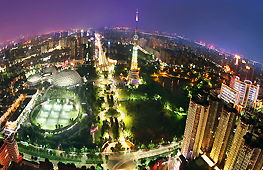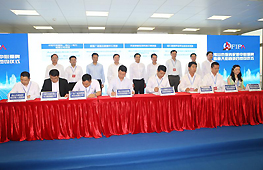Have you ever looked at a silk scarf or tie and wondered: how is this made? In this age of near instantaneous online shopping, we often forget the process behind the final product. For silk products, the process is quite involved and a bit more complicated then clicking a few times on Tao Bao. The history of Chinese silk and silk production goes back over 2,000 years. In ancient times, silk was a prized export and lead to the creation of the famous Silk Road. Today, silk is still a top Chinese export and China produces almost 80% of the world’s silk. In other words, silk is woven into the fabric of Chinese tradition and culture.
According to legend, the discovery of silk was a complete accident. One day, the wife of Emperor Huangdi was enjoying tea under a mulberry tree when suddenly a silkworm cocoon landed in her teacup. To her surprise, the fibers from the cocoon started to unravel. She then realized that these strong fibers could be used to make fabric. She then later taught her people how to raise silkworms and the industry was born.
Today, silk is primarily produced in provinces south of the Yangtze river delta. In Zhejiang province lies the city of Tong Xiang and Baquan village. For millennia, silk was only produced in China and was a closely guarded secret. If anyone was found trying to smuggle silkworms or mulberry seeds they were executed. But in Baquan village, visitors are allowed to experience sericulture hands-on without losing their heads.
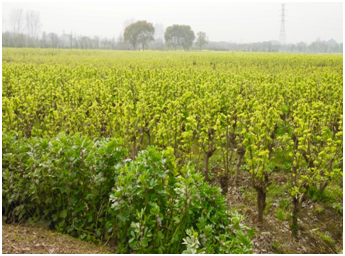
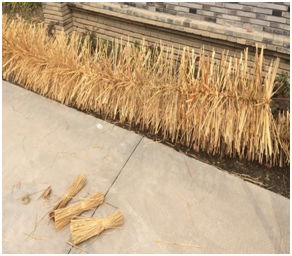
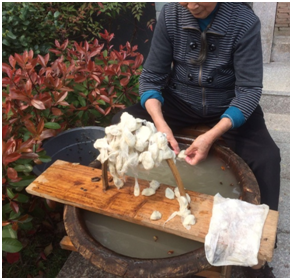
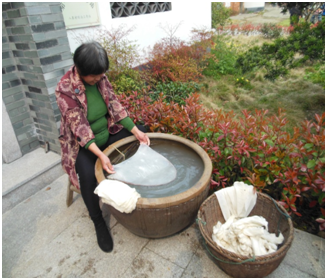
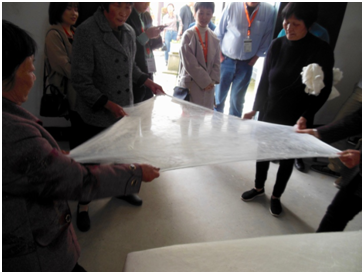 How to raise silkworms and stretch the silk fibers. [Photos provided to chinadaily.com.cn]
How to raise silkworms and stretch the silk fibers. [Photos provided to chinadaily.com.cn]
The first things you’ll see when you enter Baquan village are fields of mulberry bushes. After hatching from their eggs, silkworm caterpillars are feed a carefully monitored diet of mulberry leaves and rapidly increase their bodyweight. They then will need to find a place to spin their cocoon. Workers spin straw in-between to pieces of rope to create a controlled environment for the caterpillars to create their cocoon. It takes 8-9 days for the cocoon to be completed. The cocoons are then harvested to be boiled in hot water to loosen up the silk fibers. The pupa inside the cocoon has to be removed and the cocoons are gathered up to be cleaned and then stretched. In Baquan village, workers still do all of this by hand. Stretching the strong silk fibers is harder than it looks and requires great strength. After this, the bunches of cocoons are then stretched out into sheets and stacked on a table. An estimated 150 sheets (2kg) of silk fiber will create one quilt.
What is surprising about all of this is that in Baquan village, silkworms are harvested twice a year for only a two-month period. But what is not surprising is how dedicated the workers in Baquan village are. It is through their hard work, time, and effort that the unique history and tradition of Chinese silk making is preserved. It is with great hope that this tradition will be passed on and preserved for future generations.
Author:
Kyle W. Porter, an American, is a member of the Hangzhou Association of Foreign Writers responsible for regularly launching and organizing related activities of the association. The Association currently operates a collection of online electronic magazines, for which Mr. Porter writes a regular column. In addition, he also writes many kinds of literary works, such as poems, novels and plays. At present, Mr. Porter is working in Lanqing Primary School in Ningbo city. As an English teacher there, Mr. Porter has visited China's many famous historical and cultural scenic spots and enjoyed China's magnificent natural scenery. He hopes that he can have more in-depth experience of “Chinese traditional culture”, and introduce China to the world through his stories.











